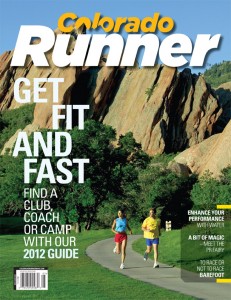The U.S. Olympic Track Trials will begin on June 22 in Eugene, Oregon. It’s an exciting time for elite runners, who will be battling for a coveted spot on the U.S. Olympic team, and the chance of a lifetime to compete this summer in the London Games.
A total of 12 hours of live track and field coverage will be a part of a record 67.5 hours of total Olympic Team Trials coverage by NBC in 2012. The 2012 Olympic Team Trials – Track & Field will run June 22-July 1 at Hayward Field in Eugene, Oregon. Covered in prime-time between NBC and the NBC Sports Network, the 12 hours of live coverage will span the course of eight days.
Training to compete in the Olympics is a full-time job for most runners. The time and energy it takes to reach a level of fitness incredible enough to earn a spot on a U.S. Olympic team is demanding. While the superstars of the sport have no problem attracting lucrative shoe contracts, up-and-coming athletes often struggle to make ends meet.
Nick Symmonds, a top 800 meter runner and 2008 Olympian, was recently looking for sponsorship opportunities ahead of the Olympic Trials and decided to auction advertising space on his left shoulder through an Ebay auction. The top bidder, Hanson Dodge, paid $11,000 for a temporary tattoo to be worn by Symmonds during every meet for the next year. Symmonds was inspired by U.S. shot-putter Adam Nelson, who held an Ebay auction to attract a sponsor in 2005.
Symmonds was also hoping to generate a bit of controversy. He has spoken out against restrictions by the IAAF and USATF, track’s international and U.S. governing bodies. There are strict rules concerning how athletes can promote individual sponsors. In fact, athletes are not allowed to promote sponsors on their bodies at all, meaning Symmonds will have to cover his tattoo with tape at most events.
“I’m going to have to cover the tattoo in situations [because of these rules], but it almost gives more value to the fact that I have to cover it up,” Symmonds said. “A guy running around with tape on his arm looks kind of silly. I’m sure I’m going to be asked many times what’s going on there. I’ll have to say this great sponsor @so-and-so is supporting me … but I’m not able to display their name [during races] due to these antiquated rules.”
Does it really matter how many logos a runner wears on their uniform and how big those logos are? Does it really matter if runners dress more like professional cyclists or race car drivers rather than professional golfers? It seems to matter a great deal to the IAAF, which has typically allowed just one small logo per uniform. The group decided to modify the rules this year to allow two small logos per uniform because of the growing dissent among athletes. But runners like Symmonds say it’s not enough. Tune into the Olympic Trials to see if this debate continues to heat up.
Jessica Griffiths


